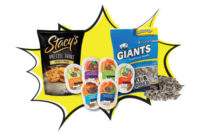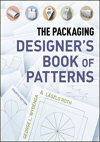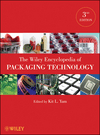Market Trends
The State of Snacking
In the crowded snacking segment, packaging can be a point of difference that drives brand loyalty and sales.

Photo courtesy of Planters

Snacking By State: Using Google Trends, Zippia.com determined which states were the most avid fans of each snack. Note: Missouri’s favorite treat, Grandma’s Cookies are a brand, not their actual grandma’s cookies.
Source: Zippia.com

Snacking By State: Using Google Trends, Zippia.com determined which states were the most avid fans of each snack. Note: Missouri’s favorite treat, Grandma’s Cookies are a brand, not their actual grandma’s cookies.
Source: Zippia.com

Snacking By State: Using Google Trends, Zippia.com determined which states were the most avid fans of each snack. Note: Missouri’s favorite treat, Grandma’s Cookies are a brand, not their actual grandma’s cookies.
Source: Zippia.com




Snacking is an American pastime. Mintel's Snacking Motivations and Attitude study have the proof stating, “Snacks account for 51% of all food sales, and 92% of adults in the United States have snacked within the last 24 hours.”
Darren Seifer, food and beverage industry analyst for the NPD Group, Inc. agrees, “America is a nation of snackers and we’re no longer as averse to snacking as we once were. Instead, snacking is viewed as a way to have a quick bite in between meals or as a convenient meal side.” In fact, the market size of the Snack Food Production industry in the U.S. increased faster than the manufacturing sector overall. According to IBIS World, the market size, measured by revenue, of the snack food production industry is $45.8 billion in 2021. As more products hit shelves, brands need to look to packaging to stand out on the shelf. “Snacking is woven into the fabric of our daily lives, and this way of thinking provides endless opportunities for food and snack marketers.”
Research* indicates snacking and snack food consumption follow a daily rhythm in most U.S. households with better-for-you snack foods, like fruit or yogurt, being eaten in the morning; more savory snacks, like potato chips or tortilla chips, eaten at lunch; and more sweet snacks, like chocolate candy and cookies, in the evening. Taste, satiety, being a favorite and being easy to eat are table stakes throughout the day when it comes to consumers snacking and selecting snack foods, and health-driven motivations give way to satiety as the day progresses.
From rigid forms of snack food packaging like paperboard tubes and cardboard boxes to alternatives like pillow bags and flexible pouches, there is a diverse selection of packaging material available. Today, a common packaging application for snacks chips, crackers, candies, and nuts is the flexible pouch. Flexible snack packaging is a frequent choice due to the bags being resealable, not to mention its low environmental impact. Easy-open features and built-in recloseability is a must. Zippers, sliders, and peel and reseal labels are a few options that keep products fresh and consumers content. Because if you have to use scissors, a knife or your teeth to open a snack, it’s a package fail.
The Pandemic and Portion Control
Although snacking was already on the rise before the COVID-19 outbreak, the pandemic did accelerate snacking and snack food consumption. According to Nielsen, dollar sales of salty snacks were up 14% for the year ending Feb. 6, 2021, while sweet snacks were up 11%. Comparatively, the year prior, both snack categories were up 4% and 3%, respectively.
Although the snack map proves otherwise, it’s believed consumers are eating healthier snacks. Brands like J.M. Smucker are noticing. The legacy brand believes creating better-for-you snacks is better for business. The company’s own research indicates seven out of 10 consumers find better-for-you snacks appealing (69%). Generationally, this sways most heavily toward millennials (79%), particularly 25–34-year-olds (81%). Not surprisingly, more women (74%) than men (64%) find better-for-you snacks alluring.
One packaging method that promotes healthier snacking is single-serve packaging. Consumers find it an easy way to manage portion control. Single-serve packaging prevents mindless TV grazing or “snaccidents” that happen when a person accidentally consumes an entire snack when he/she initially meant to eat just some of it. Add this to the list of behaviors we can blame on the pandemic.
Let’s face it, life has changed. Many of us will continue to work from home and continue to stay home and binge-watch TV. Two things that involve an assortment of snacks.
* NPD, J.M. Smuckers Inc. and Hartman Group
Looking for a reprint of this article?
From high-res PDFs to custom plaques, order your copy today!











